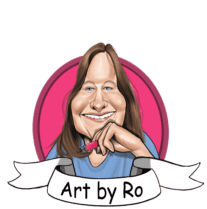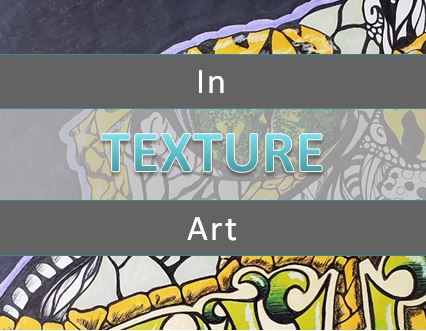Texture in Art
In this lesson we are going to look at the different types of texture in art, as well as how to create some of those textures.
Whether actual or implied, texture in art makes a work much more interesting to look at. When describing texture we can use words like smooth, wet, bumpy, rough, fuzzy, sharp, or soft.
Not to mention countless others as well.
As artists we use texture in our work all the time. Sometimes without even realizing it. With practice, using texture in art becomes an automatic function for us. Adding these extra details to your drawings can make the difference between your works being boring and being amazing and interesting.
So be sure to include a variety of texture in your own works of art.
What is Texture in Art?
Texture is one of the seven elements of art. It describes the way a work of art looks or feels. Everything has some type of texture.
In physical works of art, it describes how an object feels when touched.
The texture is how you would describe the way it feels. Such as smooth, rough, sharp, or bumpy.
In two dimensional works, such as paintings or drawings, texture is used to describe the visual feel a work has.
Different techniques can be used to make a drawing look rough, smooth, fuzzy, or bumpy. Texture appeals to our senses of sight and touch. It can be used to create emotions in art.
What Are the Types of Texture in Art
Actual, implied (or simulated), abstract, and invented are the four main types of texture in art. The two most commonly used types of texture are actual and implied.
Let’s look at each one individually and in more detail. We’ll also look at examples and talk about some famous artists who used texture in their artwork.
Actual Texture
This refers to how a painting or work of art feels. With actual texture, the object feels the way it looks.
Paint can be layered or placed on the canvas in such a way that it’s raised. This creates a bumpy or rough surface to the painting.
Painting on a surface that isn’t smooth would also create some texture in the work of art.
Some artists add other materials to their painting such as wood or grass.
Famous Artists Who Used Actual Texture
Vincent van Gogh (1853 – 1890) was a Dutch painter known for his bright colors and heavy brush strokes. His artistic credo was “Love what you love”.
He was known for his intense self-portraits and sunny landscapes. Van Gogh painted nearly forty self-portraits during his ten year career.
Van Gogh didn’t pursue his art career until the age of 27, after failing at many other vocations. He was seen as a misfit who suffered from depression and mental illness.
But he felt there was something inside himself that he was meant to share with humanity. So in 1886 he went to Paris, where he discovered Impressionism. It was here that he adopted the broken brushstrokes and bright complementary colors.
But his art was always original. Van Gogh believed his paintings could tell you things that he couldn’t say with words. He also believed that by painting incorrectly, by academic standards, he could better tell the truth.
Vincent van Gogh used art as his therapy, producing over 800 paintings and many more drawings in ten years. He would often paint all day without even stopping to eat.
“Life is Sad”
From 1888 – 1890 was spent in a sanatorium in Arles. It was during this time he painted the famous Starry Night. Although his mind was in complete chaos during this time, his painting was nothing short of complete unity.
But whether he was painting sunflowers, landscapes, night skies, or self-portraits, his paintings were filled with emotion, colors, and rich with textured brush strokes. You can actually feel the texture with your eyes.
He is often credited for the creation of the Impasto technique which refers to applying and mixing the paints directly on the canvas. It is said that Van Gogh would mix them with his fingers rather than a brush.
Vincent van Gogh only sold one painting during his lifetime, which ended in 1890 after taking his own life.
Anselm Kiefer (1945 – ) is a German painter and sculptor. He is best known for incorporating materials in his paintings. Such as straw, tar, epoxy, ash, copper wire, lead, and more.
Many of his works depict the horrors of the Holocaust, and are done on a large scale. His Kiefer’s paintings are often described as being confrontational. They are definitely breathtaking and powerful.
And his use of actual texture is amazing.
Examples of Actual Texture in Art
- The Starry Night by Vincent van Gogh (1889)
- Osiris and Isis by Anselm Kiefer (1985-1987)
- Penitent Magdalene by Donatello (1453 – 1455)
- Crags and Crevices by Jane Frank (1960)
Implied Texture
This type of texture in art refers to creating the illusion of an actual texture in a work of art.
For example, making a painting of a lion with realistic looking fur. Or drawing a brick wall with bricks that look real.
Creating realistic texture will take a bit of practice. But if you work at it and don’t give up you can make your textures as real as you want them to be.
Abstract Texture
This refers to a texture that is inspired by an actual surface but is simplified or rearranged in such a way that appeals to the artist’s sense of creativity.
When creating abstract texture, you are free to do whatever you want. Let your inspiration take your artwork wherever you want it to go.
Invented Texture
These textures don’t exist in the real world. They are completely from the imagination.
This can be seen in drawings of real objects but with lines and patterns in place of the real textures it would have.
Such as mountains filled with patterns instead of snow and rock.

Or a bird filled with Zentangles instead of feathers.

There are many ways to create invented texture in art.
Texture Examples
There are some really cool textures you can create for your artwork. Things like wood grain, fur, brick, or scales. There are so many different ways to create texture to use in your paintings and drawings.
You can draw feathers on your angel wings that look soft.
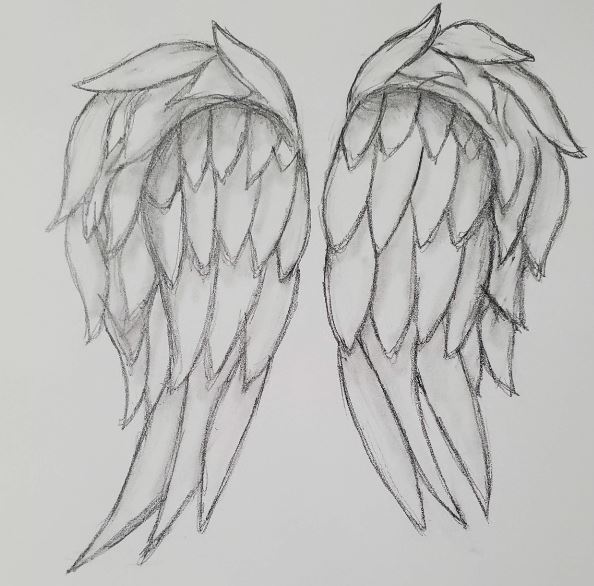
Or you could draw a brick wall for your graffiti art that looks rough.
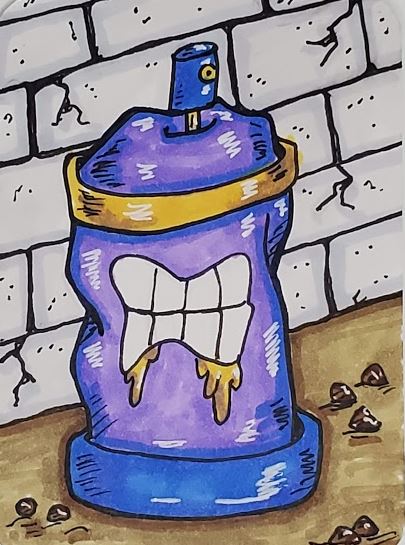
You can make your textures loose, super detailed and realistic, or abstract. There is a lot you can do with texture in art. In this drawing of a alligator eye, a variety of textures were used. The eye itself is smooth and shiny. And the scales are rough.
This creates some contrast between the two textures and makes for a more interesting design. And you can make your textures realistic or they can be abstract like the scales.
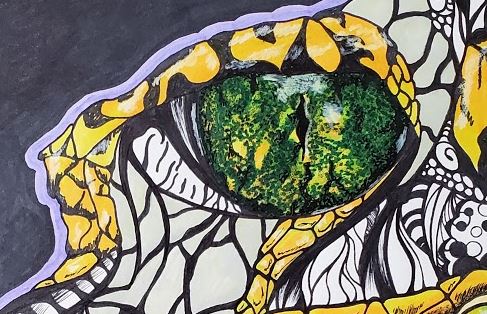
Types of Texture in Art – Final Thoughts
We all have experiences in a world full of textures, whether we realize it or not. From rough rocks, to smooth marbles, all of us interact with texture everyday of our lives.
While going through your day to day activities begin to notice the textures around you. Pay closer attention to the way things look and feel. How would you describe the objects you come into contact with?
Could you recreate these textures on paper or could you use some of them to create a rubbing of the texture? Find ways to incorporate texture in art into your day.
